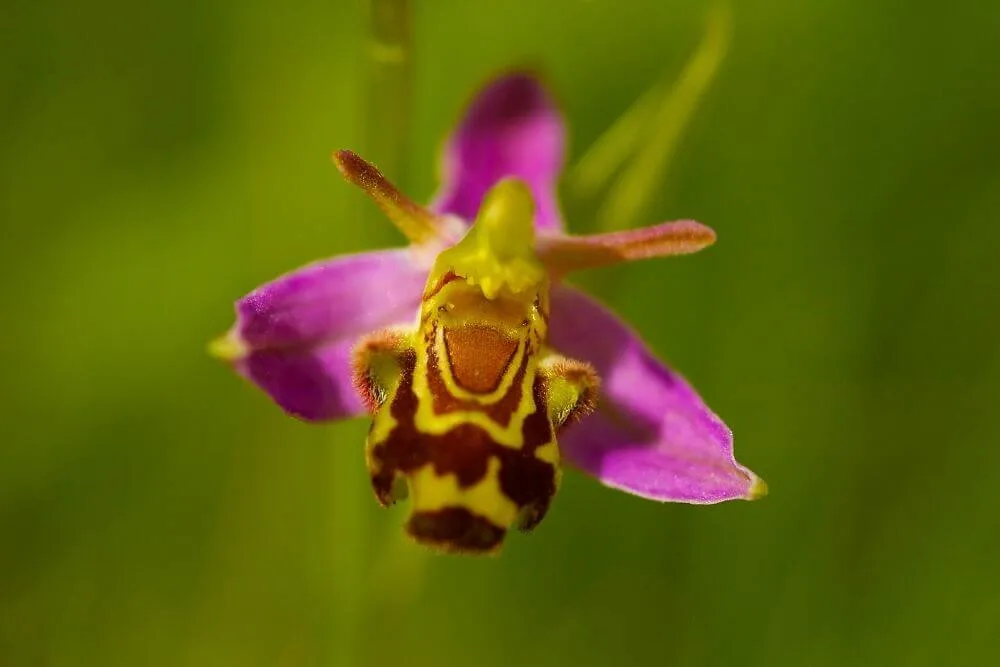
The Burren is a unique area of Ireland, unlike any other. This celebrated region is famed for many things, including its interesting geology, its rich archaeological heritage and without a doubt, its exceptional flora and fauna.
If you are lucky enough to visit this area, please do not damage or pick any of the plants or flowers. This is a very unique area with many rare, protected and endangered species and is very sensitive to disturbance.
Table of Contents
Flora and Fauna in the Burren
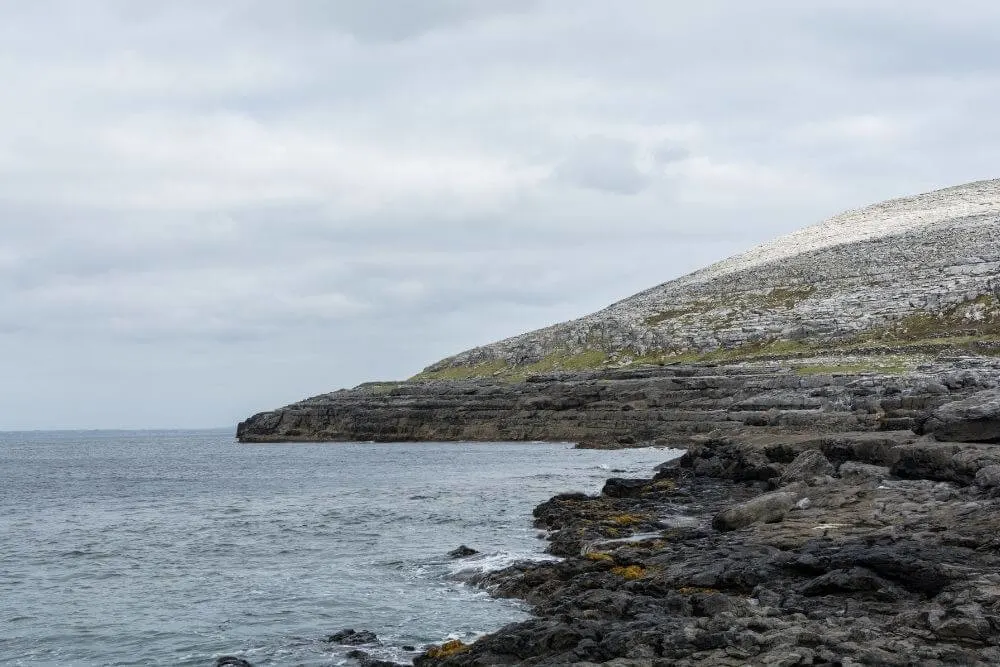
This article focuses on the flora and fauna of the Burren and some of the farming methods that have been traditionally used in the area for thousands of years that helped nurture this biodiversity.
Check out our Complete Guide to the Burren for information including:
- The origin of the Burren name
- How the Burren was formed
- The archeological history of the Burren,
- Tips for exploring the Burren by foot on the many hikes trails
- Itinerary ideas for a day in the Burren
- Fascinating facts about the Burren
Farming in the Burren
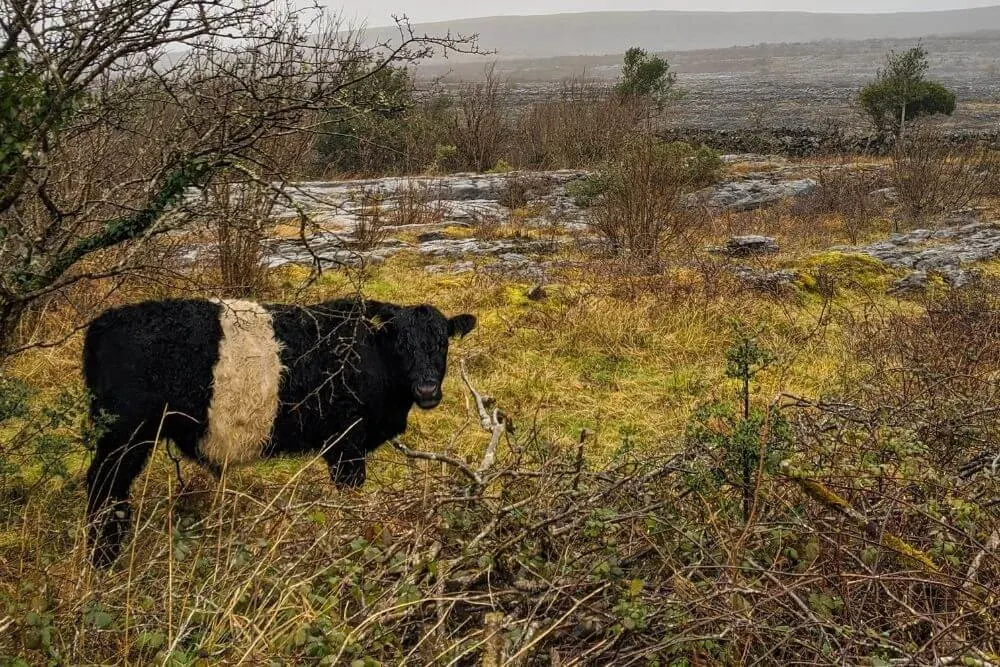
There is a long history of human settlement in the Burren and through the generations that have lived and worked on the land, special farming practices have developed in this region. Today, there are several hundred farms still operating in the area.
One of the most interesting aspects of farming in the Burren, particularly in relation to the benefit of biodiversity in the grassland areas is the use of reverse transhumance.
The use of managed grazing in this case has very positive impacts on the diversity of flowering species in the Burren.
Winterage or Reverse Transhumance
Transhumance is a term used for the grazing of cattle or animals that refers to the movement of the animals between their summer and winter pastures. It is common farming practice in the Alps, where the animals are taken out to the hillsides and allowed to graze on the hills in summer.
The method of “reverse transhumance”, or as it is known locally winterage, has been practiced in the Burren for thousands of years. This grazing management method, where the animals (mostly cattle, rather than sheep in the Burren) are allowed to graze outside in the grassland areas in the winter time and not feed supplementary food indoors.
This traditional Irish method of animal grazing is particularly suited to the mild climate along the west coast of Ireland in winter and is found in this region and the Aran Islands.
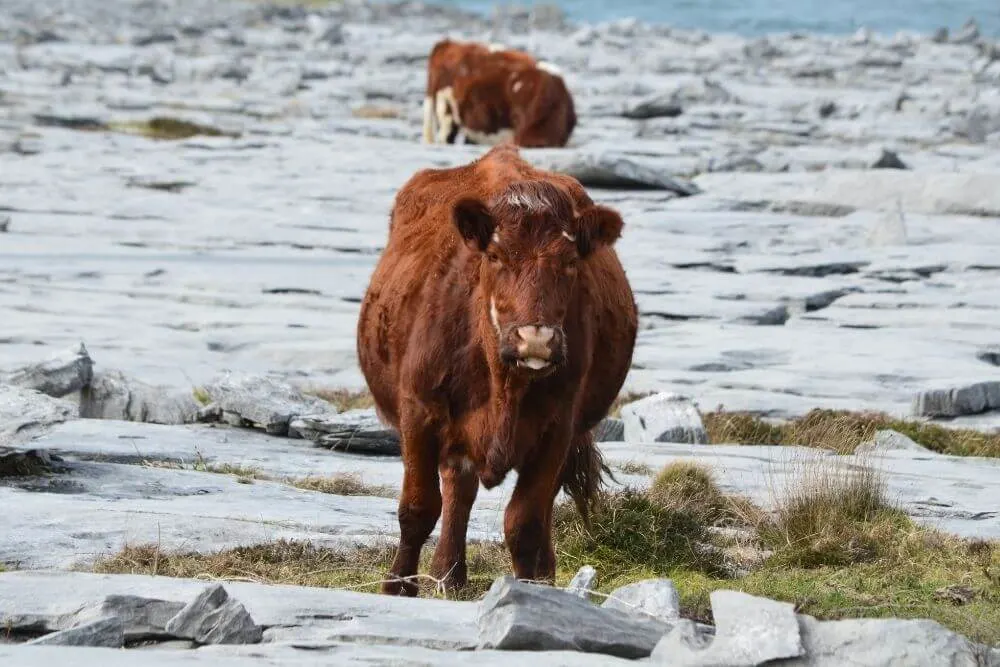
In summer, there is less water available in the Burren. This is due to the fact that the limestone rock is permeable and much of the water does not stay at the surface long and permeates through the ground to underground streams and rivers. This results often in dry and unpalatable vegetation for animal grazing.
In winter however, there is more water availability due to higher rainfall, which in turn boosts the water table benefiting the vegetation.
Additionally, the limestone rock beneath the grasslands absorbs the heat gradually over the summer and releases it slowly later in the year, which gives the grass growing an extra boost prolonging the growing season, making it an ideal winter pasture.
When the cattle graze the vegetation, they help to keep the vegetation low and open up spaces for new seedlings to grow through their tramping.
This enables the Burren’s flora to recover and thrive during the summer months, when the plants flower and set seed with strongly reduced grazing pressure. This enables other species, such as the many orchid species that the Burren is famed for to thrive in this fine balance of farming and nature conservation.
While overgrazing is a serious problem, careful management of grazing numbers and intensity can actually help biodiversity by preventing the complete encroachment of scrub, which would otherwise tend to dominate this area.
The method of reverse transhumance also reduces the dependence on supplementary fodder and external nutrient inputs, such as fertilizers, which can impact the water quality in this sensitive region.
New farming methods and techniques mean that the practice of winterage in this area is not as common as it used to be, but there is increased enthusiasm and funding from the EU to maintain such long standing, traditional farming practices.
Flowers in the Burren
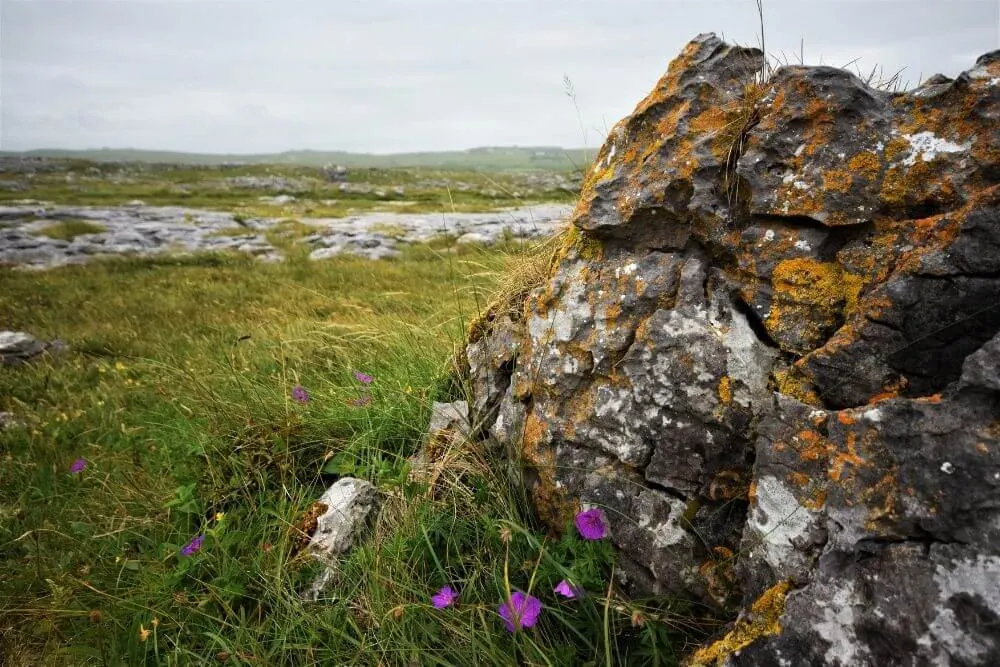
While this rocky environment can look barren at first sight, it is in fact a very biodiverse area, with about 75% of the flora of Ireland being found there. (Find out more about common Irish flowers, as well as rare flowers native to Ireland here)
If you are interested in botany, then a visit to the Burren is one of the best places to see Irish plants and flowers.
What makes the Burren flowers so unique?
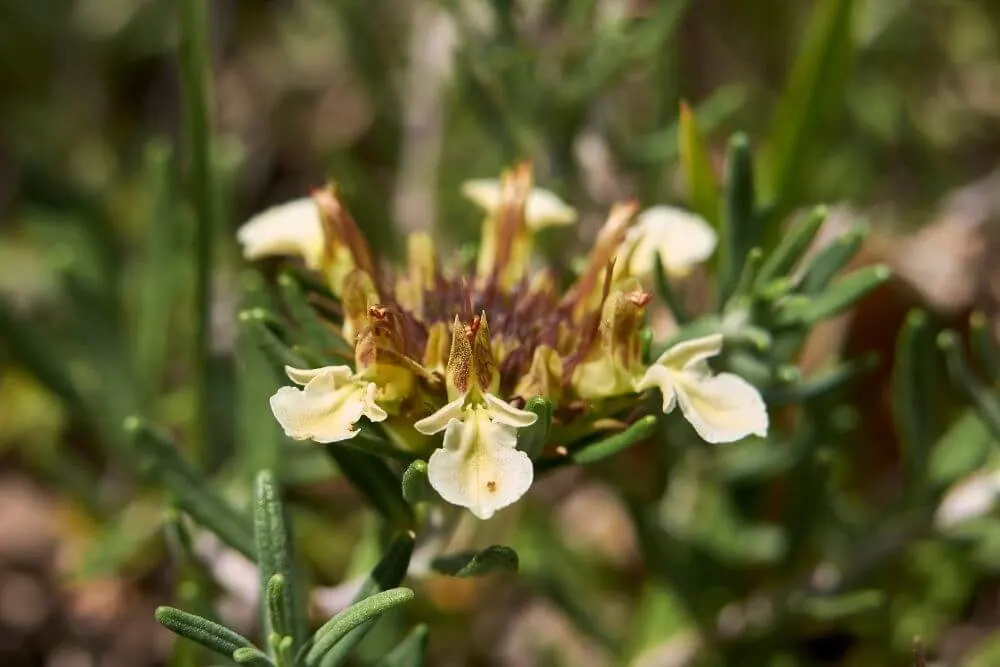
What makes the flowers of the Burren so unique is that many of the plants that grow in the area do not usually grow together in the same environment.
Plant species from the Mediterranean are not usually found growing alongside Arctic or sub-Arctic species, while species that are typically found in shaded woodland areas are found in the open as they do in the Burren. This demonstrates the wide variety of plant life in Ireland.
The Burren is not known for intense levels of sunlight, plants that would usually take shelter under a vegetation canopy do not need to do so, which is why species such as Woodland Sage (Teucrium scorodonia) (typical of semi-shaded woodland areas) can survive here.
The limestone soils ensure that the area is well drained, while the continuous supply of rain prevents the plants from drying out.
It is a combination of limestone rock covered by shallow rendzina soils that allows conditions to exist for both plants that like lime-rich soils (calicole) and those that prefer more acidic soils (calcifuge).
The thin layer of soil allows for lime-loving species to thrive on alkaline soils with higher pH levels
Interestingly, some plants that are usually found growing in acidic soil conditions, such as the heathers (Bell heather, Erica cinerea and Ling, Calluna vulgaris) are also found growing in this environment.
Native Irish Plants in Different Habitats in the Burren
Coastal Strip
The lower areas of the Burren, closer to the coast, is where one is most likely to find flowers indigenous to Ireland that have very different population distributions. For example, the delicate white Burnet Rose (Rosa pimpinellifolia syn. Rosa spinosissima), the Mediterranean species of the Bloody Cranesbill (Geranium sanguineum) and rather surprisingly the Alpine plant, Spring Gentian (Gentiana verna).
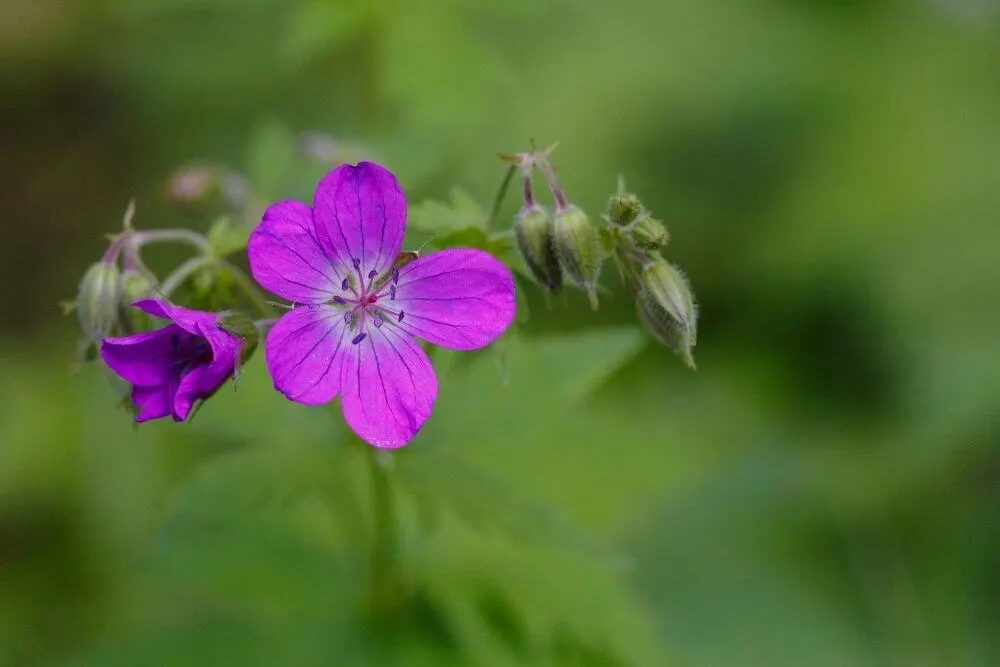
The Bloody Cranesbill flowers have a vibrant magenta colour that fades to violet as the flowers age. This plant also brightens up the landscape in autumn or fall, when the leaves turn red in colour.
As well as the flowered orchid species, the Burren is also very famous for the Spring Gentian. It is sometimes said that it is one of the most beautiful flowers that grow in Ireland.
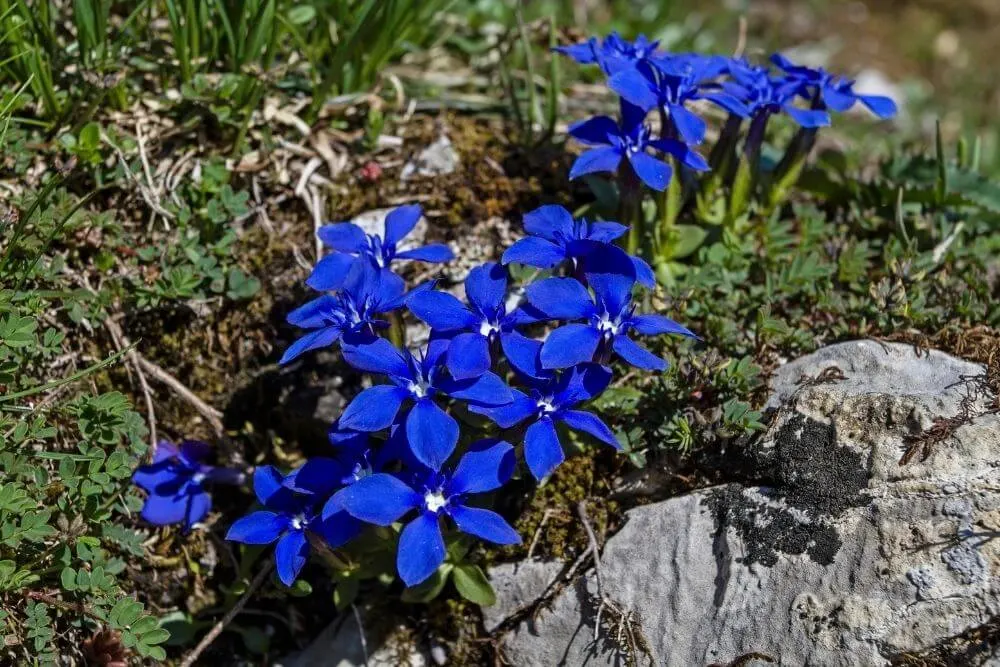
The vivid deep blue flowers of this rare native Irish plant are an electrifying sight, especially if they occur in large numbers as they occasionally do on the hills. No where else in Europe is this Alpine plant found so close to sea level. Typically it is found only at elevations above 460 m.
Limestone Pavement in the Burren
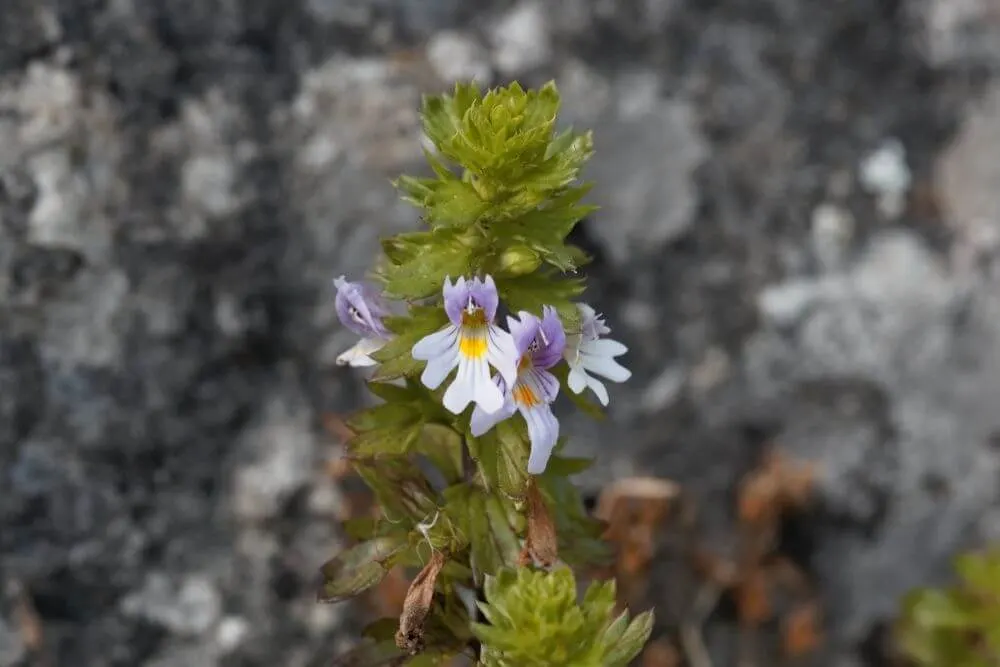
The flat limestone pavement is probably the most recognisable part of the Burren landscape.
In this windswept area, practically all species hug the ground, including limestone loving fern species (Rustyback fern, Asplenium ruta-murarua) and a few tree species (holly, hazel, ash and blackthorn) species that sometimes grow in the shelter crevices between the rocks.
Flowers more typical of mountainous areas such as the protected Hoary Rock Rose (Helianthemum oelandicum), Mountain Avens (Dryas octopetala), and Wild Thyme (Thymus politrichus) and its parasite Irish Eyebright (Euphrasia salisburgensis) grow in the limestone pavement here. Some of these are also found in the species rich dry grassland areas.
Semi-natural Grasslands
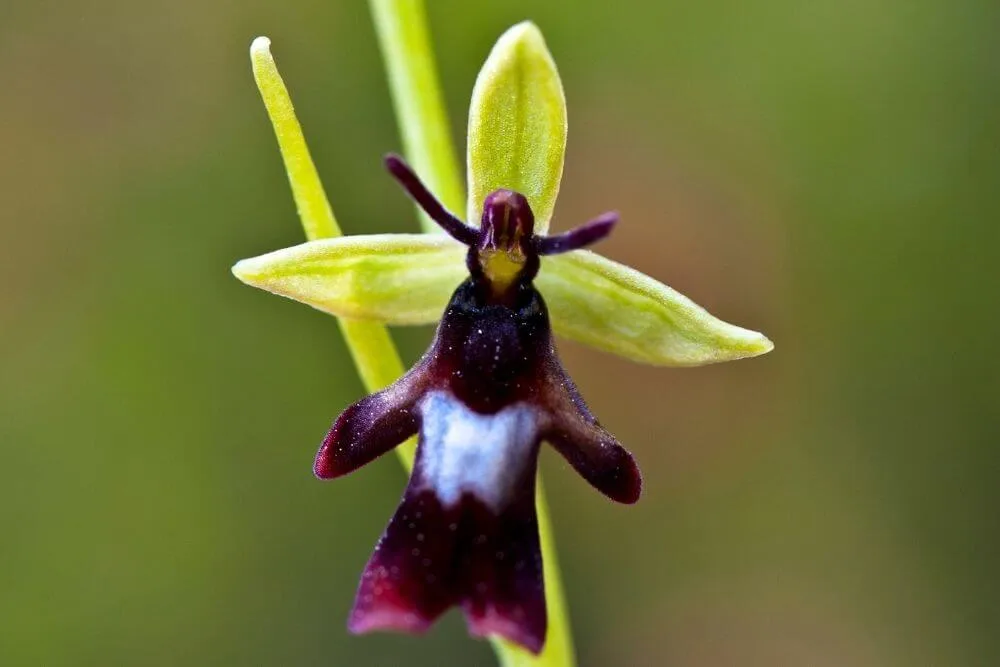
Semi-natural grassland covers a high percentage of the Burren landscape. These biodiverse areas are results of grazing management practices through the centuries (see winterage above). Without the right level of grazing, the area would revert back to a woody scrubland of mainly Hazel (Corylus avellana), Blackthorn (Prunus spinosa), Hawthorn (Crataegus monogyna) and Holly (Ilex aquafolium).
It is here in the species-rich limestone, or dry calcareous grasslands that you are most likely to see up to 23 of Ireland’s 27 orchid species. The Burren flora is internationally renowned, not least for its beautiful orchid species, such as the Early Purple Orchid (Orchis mascula), the Pyramidal Orchid (Anacamptis pyrimidalis), Fragrant Orchid (Gymnadenia conopsea Lus taghla) and the Fly Orchid (Ophrys insectifera), which lures male wasps with the smell of a sex pheremones.
There is also the Bee Orchid (Ophrys apifera), which mimics the bee species Eucera longicornis to entice male bees to pollinate it.

One of the most interesting Bee Orchid facts is that the species of bee that the bee orchid mimics is not actually found in Ireland. Its distribution tends to be in the mediterranean areas, so the bee relies on self pollination to produce seeds.
Many more flowering species are grown in these green, calcium-rich grasslands, including the yellow flowers of the Bird’s Foot Trefoil (Lotus corniculatus), a legume from the pea family. (The name for this species comes from the shape that the fruit takes in case you were wondering!).
Others include Common Centaury (Centaurium erythraea), Devil’s-bit Scabious (Succisa pratensis) and Lady’s Bedstraw (Galium verum), which is known for its sweet smell and was used to stuff mattresses.
Travel Tips:
To really get a better appreciation for the Burren, its geology, archaeology and the flora that grows here, it is best to get a guided tour of the area. Park rangers from the Burren National Park offer guided tours along the walking trails.
There are also several different walking tour operators who offer different walks in the area, such as Heart of The Burren Walks.
If all else fails, you can find out more about the flora and fauna of the Burren at the Burren National Park Information Point.
When out walking in the Burren it is advisable to stay on the marked trails and not stray from the path. Not only does this help to preserve the biodiversity, especially the flora Ireland needs to protect. It also means that you are less likely to pick up any ticks.
Footwear Tip:
The ground in the Burren is rocky, so be prepared with the right footwear. To be on the safe side, you will need ankle supports to prevent any twists or sprains on the uneven ground.
Extra Bonus Tip:
For those interested in botanicals, then a visit to the Burren Perfumery in Carron, County Clare may be well worth adding to your itinerary. It is a great stop for organic, homemade treats from the café, as well as locally sourced body creams and scents. Don’t forget to wander around the herb garden too which is in full flower from around May to September.
Animals in the Burren
Invertebrates in the Burren
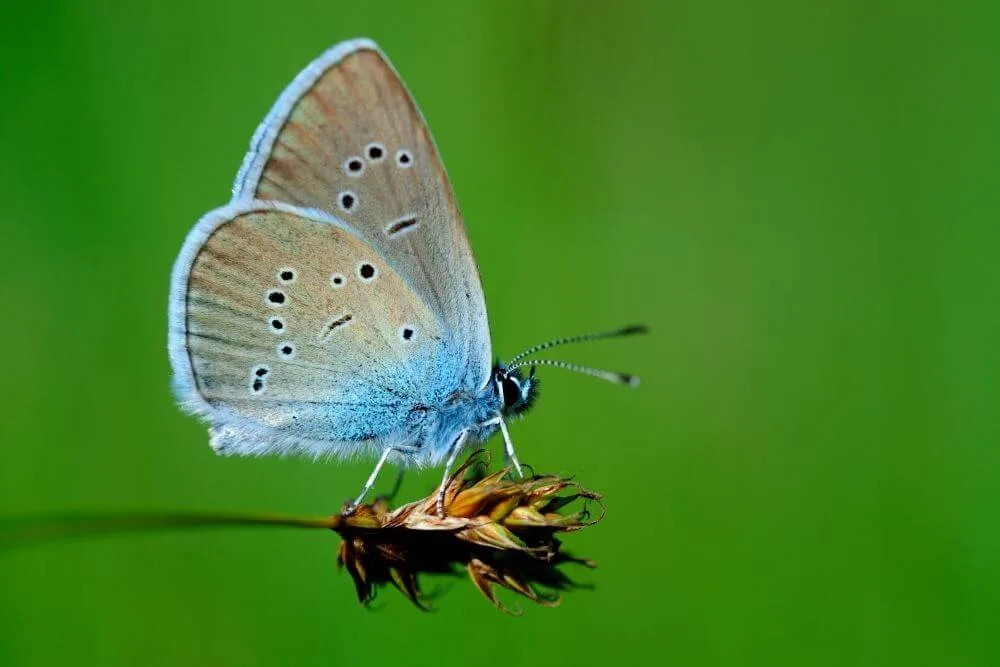
The Burren is home to an entire range of invertebrate species. In terms of numbers, the abundance of moths, butterflies and snails is particularly worth mentioning.
As many as twenty-eight species of butterfly are found in the Burren. In total, Ireland has 33 resident butterflies, so this is quite an impressive amount. Several of these butterflies are under threat from declining populations, with some already listed as endangered including the Small Blue (Cupido minimus), Wall Brown (Lasiommata megera), and Pearl-bordered Fritillary (Boloria euphrosyne).
The ample supply of calcium carbonate (limestone) in the Burren has enabled over 70 different species of snail in the Burren to thrive.
Amphibians and Reptiles in the Burren
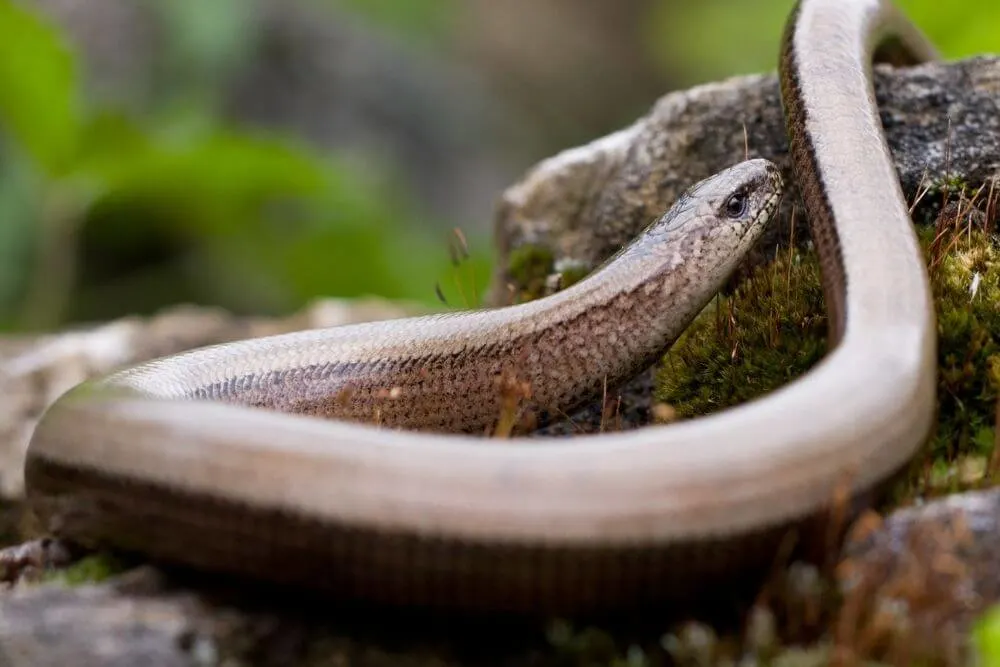
Other species include the Common Frog (Rana temporaria), the Smooth Newt (Lissotriton vulgaris), the Common Lizard (Zootoca vivipara) and an interesting animal, the snake-like Slow Worm (Anguis fragilis), which is in fact neither a snake nor a worm.
It is a legless lizard that was introduced to Ireland and the Burren region from Britain, where it does exist in the wild and has been granted protected status.
(So perhaps Saint Patrick didn’t manage to remove all of the snakes…!)
Mammals in the Burren
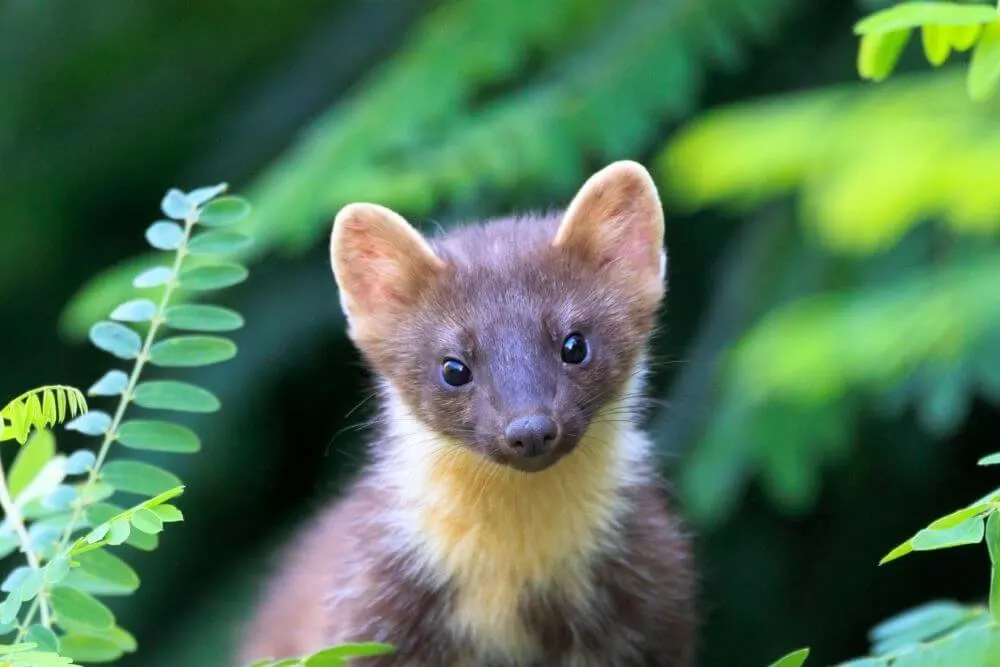
Many mammals live in the Burren too, from to Ireland’s smallest mammal, the pygmy shrew (Sorex minutus), (which is only about 6g in weight and would fit comfortably in the palm of your hand), to the large feral goats, the Burren has a complete range of mammals.
Other mammals found throughout the different habitats in the Burren include fox, Irish hare, badger, stoat, mink, hedgehog, red squirrel and the introduced bank vole.
The Burren is also home to the native Pine Marten (Martes martes), which may look cat-like, but is actually closer related to the stoat and otter. In recent years, the population of pine martens in Ireland has recovered, thanks in part to the legal protection which these mammals now have.
In the 20th century, their population declined across Ireland. A number of factors led to this decline including the demand for its fur in the fur trade and the control of foxes using poison (that also killed pine martens). In recent years the increase in the red squirrel populations have had a positive knock on effect on the number of pine martens as well.
Bats are also common in the Burren. Nine bat species are found to live here and include the internationally endangered species, the Lesser Horseshoe Bat, Rhinolophus hipposideros).
Birds of the Burren
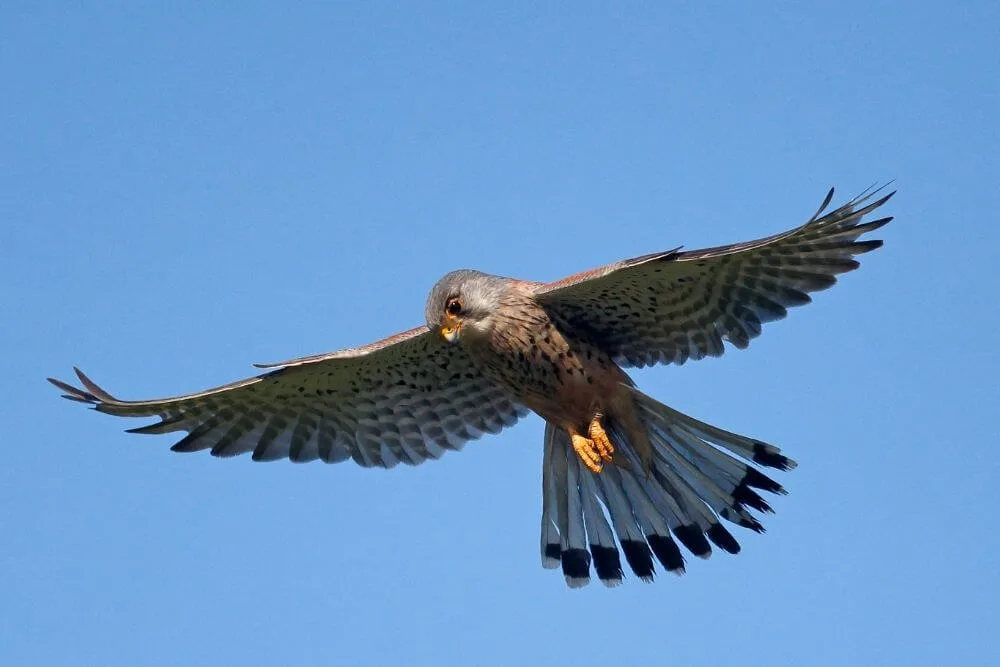
The many diverse habitats of the Burren are also home to different bird species. Within the Burren National Park 95 different bird species have been recorded.
The beautiful song of the Skylark (Alauda arvensis) can be heard in the open areas of the Burren.
Other bird species such as Blackbirds (Turdus merula), Robins (Erithacus rubecula), Wrens (Troglodytes troglodytes), Chaffinches (Fringilla ceolebs) and Song Thrushes (Turdus philomelos) use the diverse habitat available to them in the scrub and woodland areas.
Wheatears (Oenanthe oenanthe), which migrate from Africa each spring, are just one of the species to use the limestone pavements as their nesting area. Meadow Pipits (Anthus pratensis) are also found nesting in this area, but are also quite comfortable in the grassland pastures as well.
The turloughs (the disappearing lakes – find out more here) are an important habitat for Teal (Anas crecca) and Widgeon (Anas Penelope), as well as winter visitors such as the Whooper Swans (Cygnus cygnus) and Greenland White-fronted Goose (Anser albifrons flavirostris).
Falcons such as the Common Kestrel (Falco tinnunculus), Merlin (Falco columbarius) and Peregrine (Falco peregrinus) are also seen hunting their prey in the Burren. If you are lucky, you might even spot a Buzzard (Buteo buteo).
Here is a pdf list of other species found in the Burren.
FInd out more about the plants and animals in the Burren in our main guide about the Burren.

(Irish Nature Expert and Celtic Enthusiast from Ireland)
Emer Walker, founder of LetsGoIreland.com, is a Cork native with profound expertise in Irish nature and ecology. Holding a PhD in Restoration Ecology and backed by extensive research in ecological sciences, she’s delved deep into Ireland’s natural wonders, from its rugged landscapes to its serene beaches. Emer’s passion also encompasses Celtic art and traditions. As a true authority on Ireland’s natural and cultural heritage, she invites readers through LetsGoIreland.com to immerse themselves in the authentic Irish experience.
